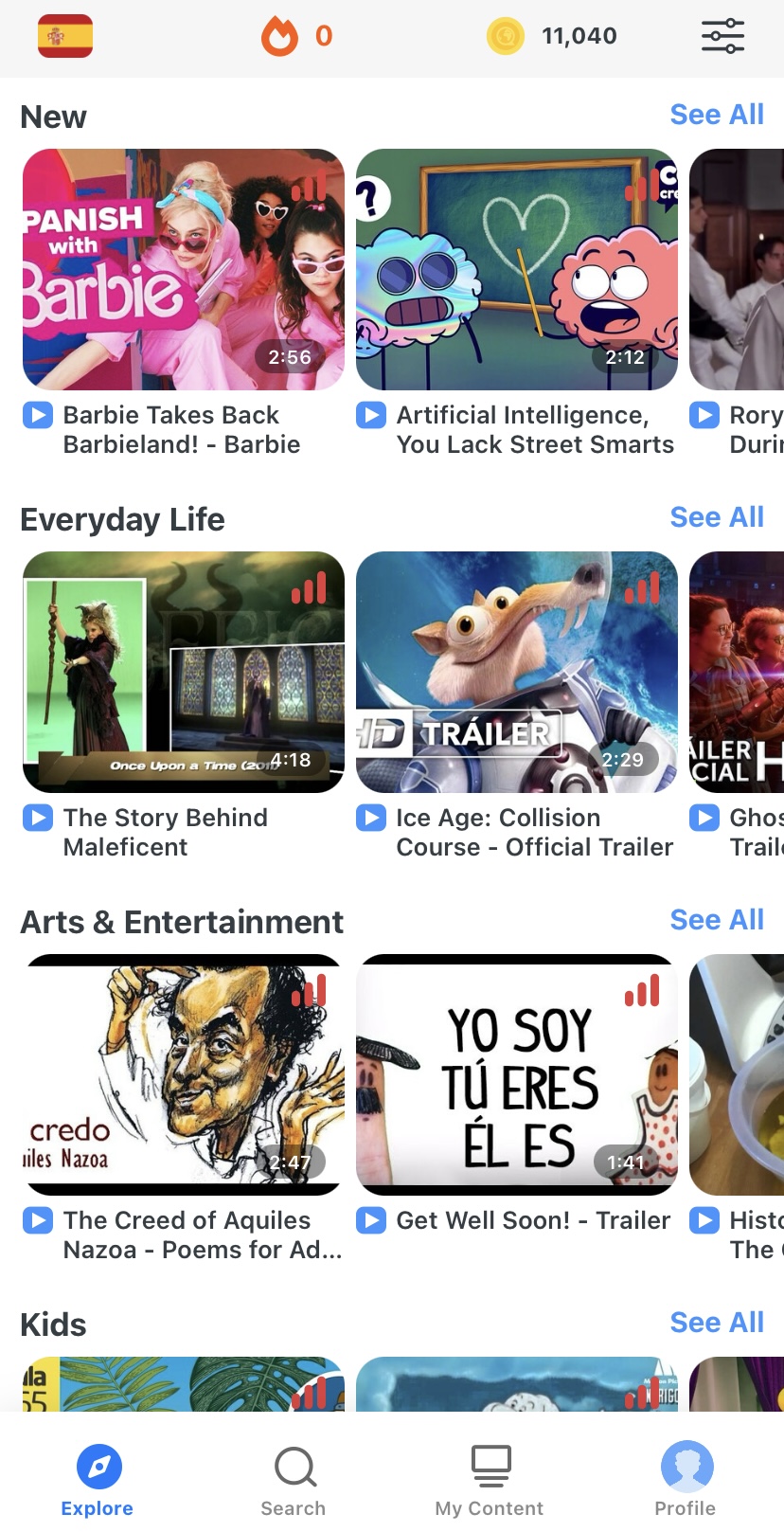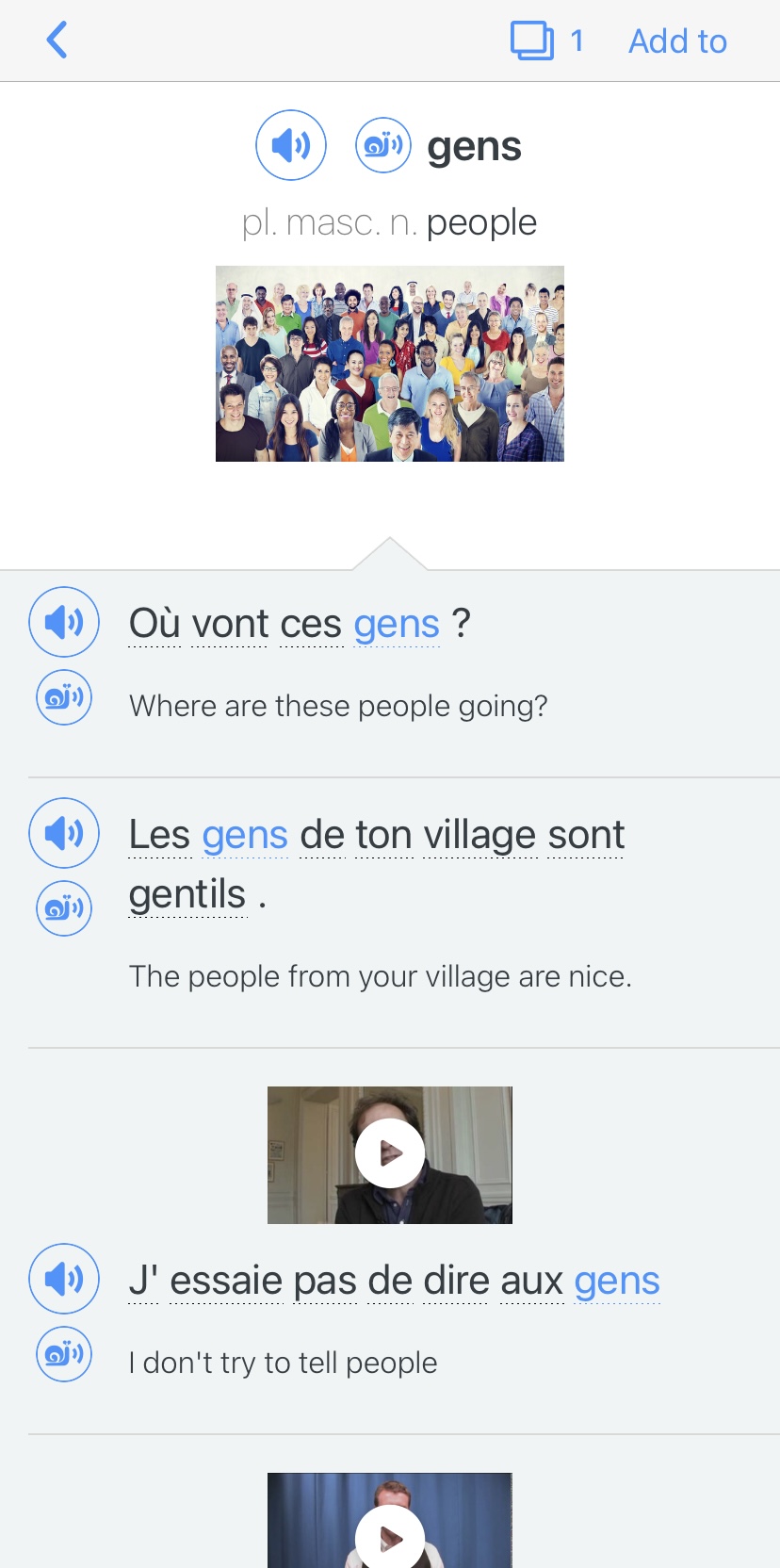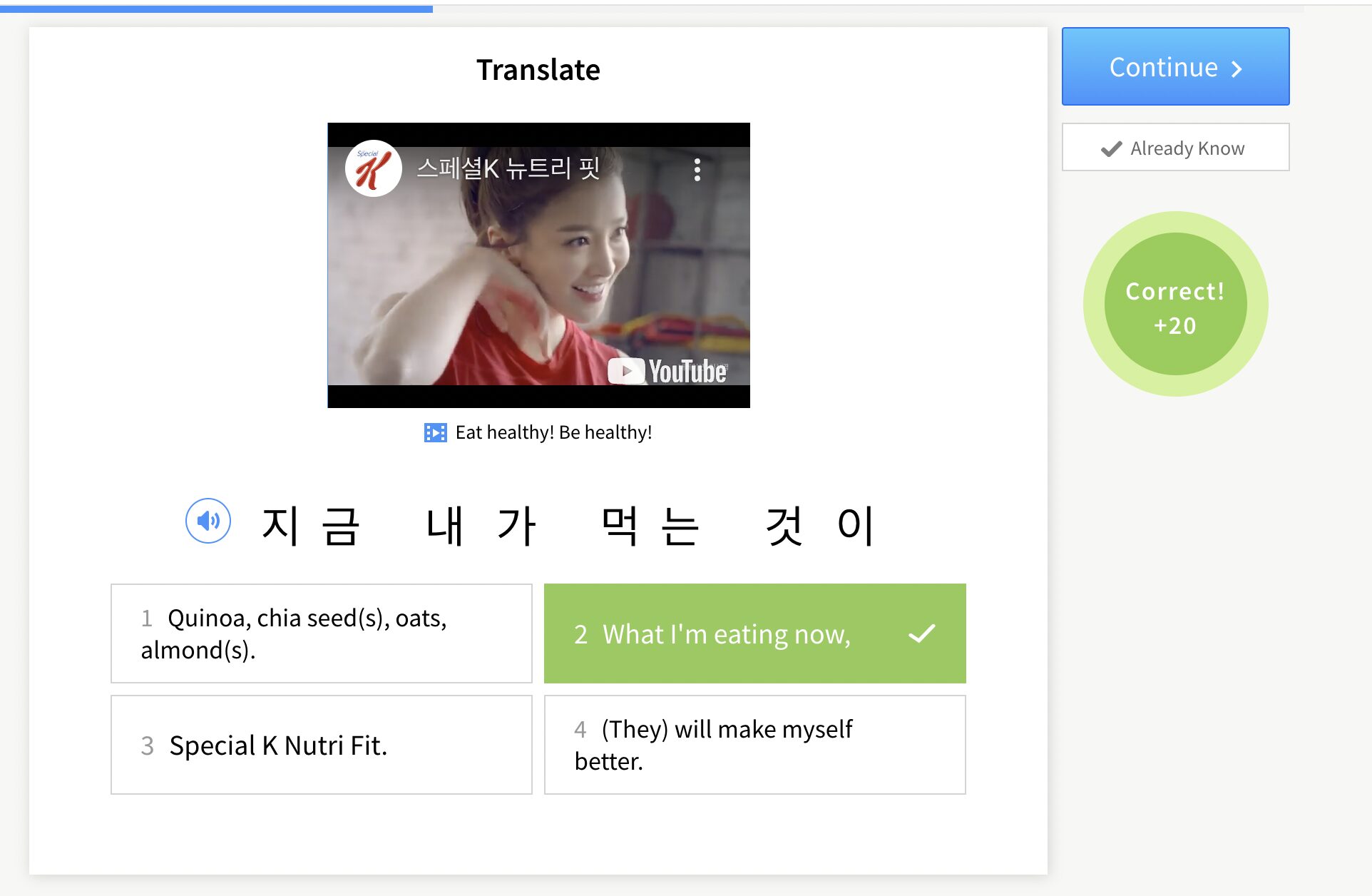Contents
- 1. Identify Your Ultimate Language Goal
- 2. Break Your Ultimate Goal Down Into Specific Steps
- 3. Pick One or Two of the Specific Steps You Came up With and Prioritize Them
- 4. Write Down Short-term Goals That Support Your Specific Steps
- 5. Set Deadlines
- 6. Be Realistic but Positive
- 7. Challenge Yourself, but Not Too Much
- 8. Get Inspired
- 9. Follow Through Your Goals
- 10. Don’t Be Afraid to Tweak Your Goals Along the Way
- Why Set Language Goals?
- And One More Thing...
How to Set Realistic Language Learning Goals

You can equate the language learning process to a hike up a long trail: The path is filled with challenging obstacles you must conquer, such as false cognates, idioms and words you don’t believe exist. But like in any hike, charting your course and knowing your objectives can help you confidently navigate these daunting points.
Setting goals is one of the most important steps you can take to ensure your success, and it’s remarkably easy to do with the steps below.
Download: This blog post is available as a convenient and portable PDF that you can take anywhere. Click here to get a copy. (Download)
1. Identify Your Ultimate Language Goal
The first step to achieving your language learning goals is to figure out why you’re studying this foreign language in the first place.
Take some time to think about the big picture and ask yourself questions like:
- Why do I want to learn this language?
- What would I do if I could speak this language fluently right now?
The answer to these questions is your ultimate goal—the one big reason you’re spending time, money and energy on learning this new language.
It’s okay if your ultimate goal is huge, multi-faceted or even a bit vague. Maybe you want to learn Spanish so you can move to Spain. Maybe you want to learn French so you can talk to your boyfriend’s family in their native language. Maybe you want to learn Chinese so you can travel to China next year.
Whatever your goal, just make sure you’re honest with yourself about it. There’s no right or wrong.
2. Break Your Ultimate Goal Down Into Specific Steps
The next step is to break your ultimate goal into specific steps—the components that make up your larger goal. At this point, you want to identify the things you need to learn to achieve your ultimate goal.
Of course, it would be impossible to, for example, list every possible thing you need to know to “become fluent in German.” Just list a few of the most important steps you need to take along the way.
Here’s an example:
Ultimate goal: To be able to communicate with Spanish-speaking patients at the medical clinic where I work.
Specific steps:
- Learn vocabulary for body parts
- Learn vocabulary for common diseases
- Learn to ask what hurts and what’s wrong
- Learn to talk about a patient’s medical history
- Learn to express sympathy for pain or loss
3. Pick One or Two of the Specific Steps You Came up With and Prioritize Them
Using our example above, if you’re working at a medical clinic, it’d probably be difficult to squeeze in time for language studies with your hectic schedule. It may also not be entirely realistic to learn every possible medical term in Spanish if you haven’t gone to a Spanish medical school.
Instead, rank the steps according to how they’d be useful to you right now. If your work mostly involves patient intakes, you may want to prioritize how to talk about a patient’s medical history in Spanish. If you work in the infectious diseases ward, learning about what common infectious diseases are called in Spanish (as well as related terminology like signs, symptoms, medical exams, etc.) should be on top of your priority list.
4. Write Down Short-term Goals That Support Your Specific Steps
Once you’ve identified the specific steps you want to focus on, you can start putting together your smaller goals.
I recommend writing down your goals in a place where you can easily access them whenever you need them. You can go about it the old-fashioned way (writing your goals in a physical notebook) or the digital way (saving them into your smartphone using a note-taking app). This way, whenever you find yourself going off-track, you can refer back to your goals and recalibrate.
As for the goals themselves, I suggest focusing on themes rather than, say, a specific number of words or length of time you should spend on your studies every day.
For example, instead of setting a goal of studying 30 minutes a day every day, set a goal of learning all the basic vocabulary words related to ordering a cup of coffee. Instead of learning “50 new words,” you can set a goal of learning the vocabulary words related to modes of transportation, body parts or types of clothing in your target language.
Doing this will keep your studies focused and keep you from falling into the trap of simply putting in time for its own sake.
5. Set Deadlines
Research shows that goals are more effective when you put them within a specific timeframe. That’s because a deadline forces you to come up with the best way(s) to achieve your goal within the shortest time possible without sacrificing the quality of your studies.
This isn’t the same as saying that you should put in 30 minutes a day for language studies (which is more of a “schedule” than a “deadline”). You want to create a point in the future where you can look back and check how much you’ve learned and how much you still need to learn.
Your deadlines can be anywhere between one week and three months, or shorter or longer. That’s why it’s important to come up with your specific steps and short-term goals first, so you can check whether your deadline is realistic.
For example, if your goal is to be able to communicate with your significant other’s family in their native language and you’re meeting them in three months, then the date of your meeting with those family members is your deadline. If you’re scheduled to close a deal with a German company in a month or so, then you have a month to brush up on your business German.
6. Be Realistic but Positive
Write your goals in a way that makes them feel achievable. A good model is this: “By [time frame], I will be able to [achievement].”
Here are a few examples:
- By the end of this week, I will be able to write all of the hiragana and katakana characters in Japanese.
- By the end of this month, I will be able to learn all of the important Italian restaurant phrases in time for my upcoming food-hopping trip in Rome.
- By the end of the year, I will be able to master all of the vocabulary and grammar needed to pass the [insert language proficiency test here].
7. Challenge Yourself, but Not Too Much
If you set goals that are too difficult, you’ll waste time stressing about them or beating yourself up for not achieving them.
For example, if you want to take the year-end Japanese Language Proficiency Test (JLPT) at the N1 level (meaning you want to demonstrate that your grasp of Japanese is near or at the native level), but you’ve mastered only 100 kanji characters, it may be more realistic (and less stressful for you) to shoot for the N5 or N4 level for now.
I suggest aiming for at least one level above your current one. Going back to our last example, you can aim to pass the N4 or even N3 level instead of the more intimidating N2 or N1 levels. This way, you’ll give yourself something to aspire to, but not to the point that you’ll risk getting discouraged from continuing your studies altogether just because you haven’t reached native fluency within a year of starting your language learning journey.
8. Get Inspired
If, at this point, you still feel stuck about what your goals should be, don’t worry! You can use the examples below for inspiration as you start writing your own unique goals:
Ultimate goal: To be able to speak Chinese comfortably so that I can move to China and use Chinese in my everyday life
Specific step: Learn the vocabulary and phrases necessary to go shopping in China.
Short-term goals: By the end of this week, I will have learned the vocabulary words for types of clothing and shoes. By the end of the month, I will have learned the phrases and basic vocabulary needed to talk to shop clerks in China.
Ultimate goal: To be able to read the newspaper in German
Specific step: Learn vocabulary related to politics and the political scene in Germany.
Short-term goal: By the end of this week, I will have learned the basic vocabulary words for issues related to elections.
Ultimate goal: To be able to talk to my in-laws on the phone in Japanese
Specific step: Learn pleasantries.
Short-term goals: By the end of the week, I will have learned basic everyday pleasantries, including greetings and closings like “How are you?” and “Talk to you again soon.”
If you’re struggling, review the examples below for help:
Instead of: By the end of this week, I will have learned how to talk about medical problems.
Try: By the end of this week, I will have learned the words for all the primary body parts (i.e. arm, leg, heart, stomach).
Instead of: By the end of this year, I will be able to have a phone conversation in Spanish.
Try: By the end of this month, I will have learned how to use basic telephone phrases such as, “Who are you calling for?” and “Dr. Smith is not available at the moment.”
Instead of: By the end of this week, I will have learned all 500 of the words in my medical dictionary.
Try: By the end of the week, I will have learned the basic terms for simple diagnoses (i.e. a cold, the flu, a backache).
9. Follow Through Your Goals
Goal-setting is not something you do once and forget about. For goals to be effective, you need to consult them regularly and set new goals every few weeks.
Every few days, take a moment to review your goals and check your progress. This will help you identify what to study next and feel good about the progress you’re making. It will also keep you on track when you’re veering away from your ultimate goal.
There’s a variety of ways to measure where you’re at and how you’re doing. You can take quizzes, test yourself with flashcard decks or see how far you can make it down a vocabulary list. For these, you can try out resources like:
- Sprachcaffe. This is a website where you can take free quizzes on the following languages: English, Spanish, French, German, Italian, Chinese and Arabic. They also have online language courses, as well as in-person courses you can take to immerse yourself in your target language and meet native speakers of that language.
- Language Testing International. If you don’t mind shelling out a bit more cash to test your current language proficiency, you may want to give LTI a try. From them, you can order a proficiency test on one of over 120 languages—including relatively obscure ones like Pashto and Akan-Tiwi.
- FluentU. FluentU uses videos combined with interactive captions to help you learn your target language. Its built-in streak tracker can tell you how much you’ve accomplished over a series of learning sessions.
FluentU takes authentic videos—like music videos, movie trailers, news and inspiring talks—and turns them into personalized language learning lessons.
You can try FluentU for free for 2 weeks. Check out the website or download the iOS app or Android app.
P.S. Click here to take advantage of our current sale! (Expires at the end of this month.)

10. Don’t Be Afraid to Tweak Your Goals Along the Way
As the old saying goes, “there is nothing permanent except change.” No matter how well-thought out your goals may have been initially, they’re likely to change in some way at some point.
Maybe you’re far enough along in your French studies that you’ve decided it’s not really a language you want to use over the long run. Maybe you got interested in Korean while learning Chinese, and given your extremely busy schedule, you’re wondering if you should put your Chinese studies on the back-burner for now. Or maybe you just want to put your language learning journey on hold for an indefinite period.
Regardless of what has changed, know that it’s not necessarily a sign that you were going about goal-setting the “wrong” way. Change is normal—in fact, if you embrace change instead of fighting it, it may give you clues on how to approach your language studies in a better way than you did before.
Although it’s important to follow through with the goals you’ve set for yourself, don’t be afraid to change your goals if they no longer serve you well. As you gain confidence in your new language, your ultimate goal may change from being able to have a phone conversation to wanting to travel to a country where your target language is spoken. When you make discoveries like this, you can adjust your goals appropriately so that they can continue to serve your needs.
Why Set Language Goals?
You’ve probably already heard a lot about goals. High school teachers love to talk about them, and so do bosses.
The reason is that people who set goals are more likely to achieve success.
This is because:
- Goals help you identify what you want to achieve. It’s hard to achieve success when you haven’t defined what “success” is. Setting goals helps you identify what you want to accomplish so you can start working toward it. What does “fluency” mean to you?
- Goals keep you focused on what’s important (and help you ignore what’s not). Learning a language requires familiarity with literally millions of different grammar points, vocabulary words and cultural competencies. Setting goals helps you stay focused so you don’t get distracted by the many things you may need to learn in the future. By focusing on smaller bits of information, you make faster progress and gain tangible skills.
- Goals save you time. Instead of memorizing vocabulary words you won’t readily use, you can spend your energy learning words directly related to the way you want to use your target language. Setting goals helps you identify your ultimate reason for studying the language, which makes it easier to pinpoint the skills and information you need to learn first.
- Goals provide a way to measure your progress, which helps improve your motivation to learn more. It takes a really long time to learn a foreign language well, and it’s frustrating to pour time into something that doesn’t seem to have a payoff. By setting goals, you can identify the progress you’re making and feel good about the work you’re doing. Instead of kicking yourself for not knowing a new word you hear, you can congratulate yourself for learning the 25 new words you just memorized.
Remember that there are no “right” or “wrong” goals. The most important thing is that you believe in your goals and can visualize yourself achieving them.
If you set goals with this in mind, you’ll find that they help you stay motivated and enthusiastic about your language learning, and you’ll be proud of what you achieve!
Download: This blog post is available as a convenient and portable PDF that you can take anywhere. Click here to get a copy. (Download)
And One More Thing...
If you're like me and love learning languages through real-world content, FluentU is a game-changer. With FluentU, you're not just memorizing words—you’re learning how native speakers actually use them.
With our newest feature, you can now bring FluentU’s interactive tools to any subtitled content on YouTube or Netflix—or even import YouTube videos directly into your FluentU account!
You’ll also get access to a huge variety of content in our curated video library, from movie trailers to news clips, music videos, and more. The best part? FluentU makes this native-language content accessible for learners of all levels.
While you watch, you can tap on any word in the interactive subtitles to see a definition, an image, audio, and useful example sentences. Want to practice new words later? Add them to your flashcards with one click. No more pausing to look up and write down new words!
And FluentU helps you actually remember what you learn with personalized quizzes, plenty of example sentences, and extra practice with the words you find difficult.
Ready to start learning in a more natural, immersive way? Try FluentU on your computer or tablet, or download the FluentU app from the App Store or Google Play. Click here to take advantage of our current sale! (Expires at the end of this month.)












